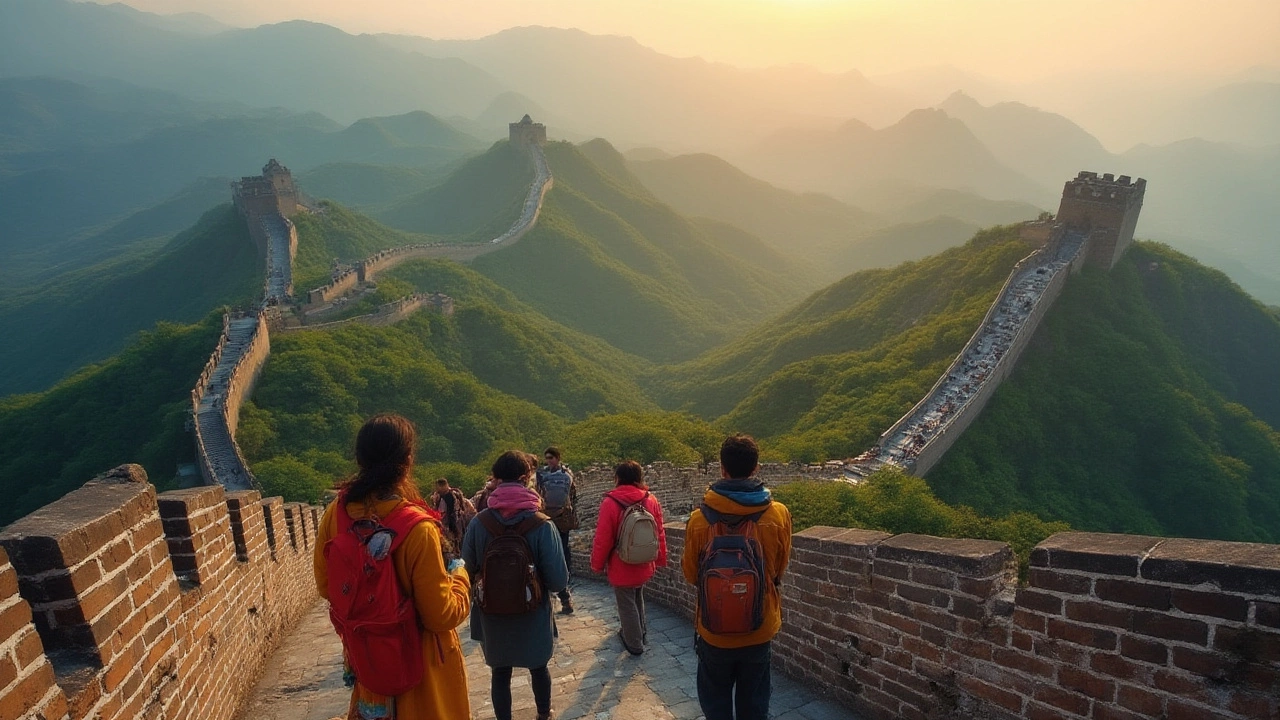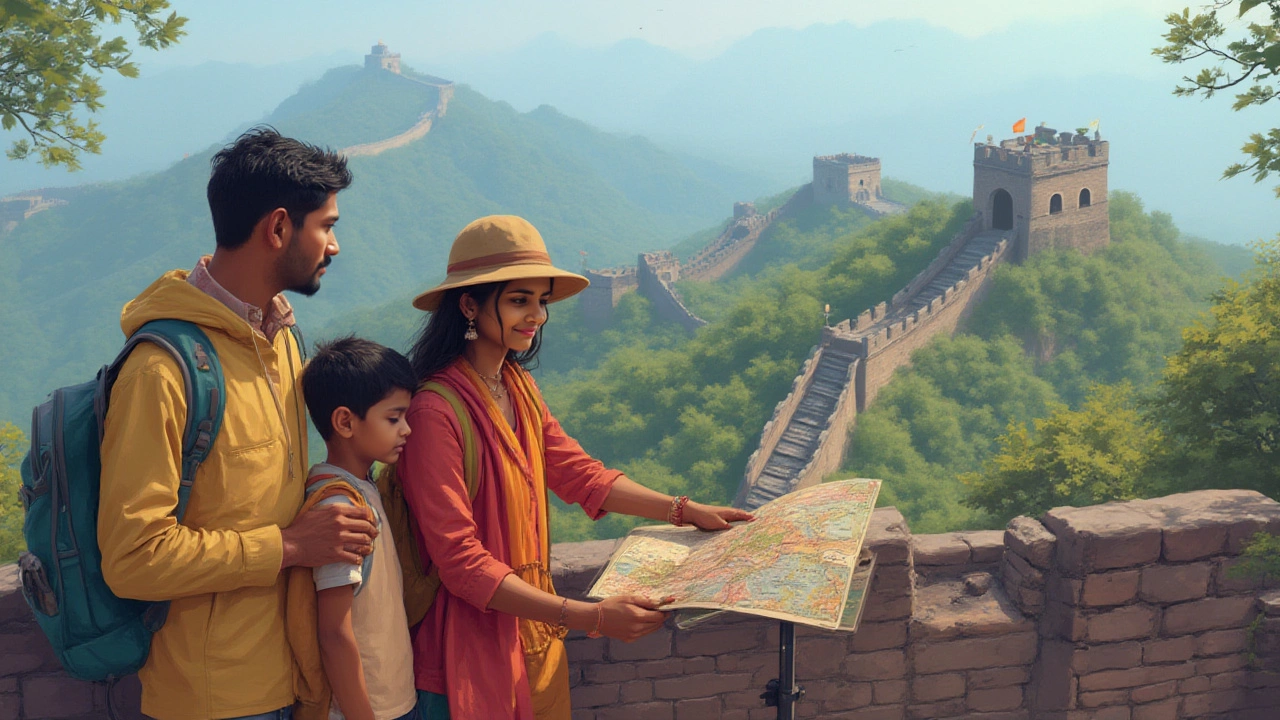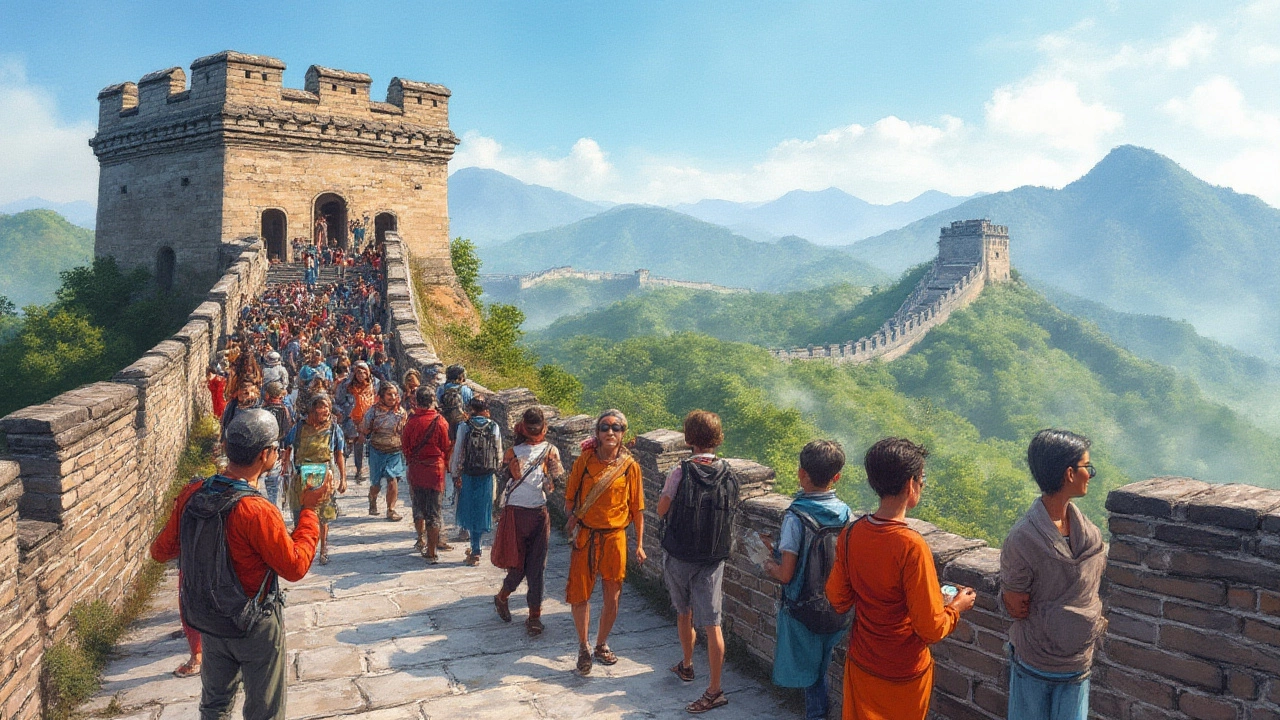The Most Visited UNESCO World Heritage Site: Exploring the Treasures of the Great Wall of China
 Jul, 12 2025
Jul, 12 2025
You could fill a bucket with morning routines and holiday wishlists, but one thing never grows old: the pure awe of standing at a place that shaped human history. When it comes to UNESCO World Heritage Sites, these aren’t just a bunch of old stones and stories—they’re living legends millions can’t resist. Out of the mind-boggling 1,199 UNESCO sites scattered across the globe, one towers over all others (sometimes literally) in terms of being the most visited on the planet. Most people, when guessing, think of romantic ruins in Rome or the ancient alleys of Machu Picchu. Nope. The answer is written across the green hills of northern China: the Great Wall of China.
The Great Wall of China: Why So Many Visit?
Why does nearly every list about UNESCO tourism start and end at the Great Wall of China? Well, the numbers don’t lie. Before the pandemic, official stats pegged annual visitor hits at over 10 million just at the popular Badaling section north of Beijing. Add in the other parts—Mutianyu, Jinshanling, Simatai and the wild unrestored stretches—and experts estimate the Great Wall sees upwards of 30 million visitors every year. That’s like the entire population of Australia bumping elbows atop ancient stone. In 2024 alone, attendance roared back after travel restrictions, topping 12 million at Badaling and nearly 20 million combined at other ticketed sections.
The Wall isn’t just one spot. It’s a chain of fortifications running more than 21,000 kilometers, wrapping itself around mountains, deserts, and even people's doorsteps. Construction kicked off over 2,300 years ago, with emperors adding and fixing pieces for centuries to keep out northern raiders. Today, standing on the Wall gifts you not just epic views, but the weird realization that you’re following in the footsteps of ancient emperors, soldiers, farmers, and (if you’re like my daughter Aria) some very serious selfie-takers.
Let’s bust a few myths. First, you can’t see the Wall from space with the naked eye. Sorry, that’s a tall tale. Second, dozens of different entry points means there’s a Wall for everyone. Want it easy? Badaling and Mutianyu have cable cars, signs in English, and even vending machines. Craving adventure? Hike the wild, unrestored bits near Jinshanling or Huanghuacheng where crumbling watchtowers tumble into forested hills. Interested in rare sights? The Gubeikou section bristles with history and silence; few tourists make the trek. You could fill years seeing every part, though most stick to the big hitters.
One quirky trick: visit in spring or late fall. Summer weekends? Swarming crowds and thick smog, thanks to Beijing’s infamous air. Go early morning, midweek, or just after rain. You’ll have cleaner skies, better photos, and space to actually touch the stones. Bring sturdy shoes too, as some steps are steep enough to make your legs howl. Merch sellers will try to hawk fake coins and ‘certificates’ that you ‘climbed the Great Wall.’ Smile and move on unless you’re collecting tourist kitsch—street bargaining is half the fun here!
Curious about the numbers? Have a peek at how the Great Wall’s visitor flows compare to other UNESCO heavyweights:
| UNESCO Site | Country | Annual Visitors (pre-pandemic) |
|---|---|---|
| Great Wall of China | China | 30,000,000+ |
| Colosseum | Italy | 7,000,000 |
| Statue of Liberty | USA | 4,500,000 |
| Machu Picchu | Peru | 1,200,000 |
| Taj Mahal | India | 8,000,000 |
As you can see, nothing else comes close. Even world-famous spots like the Colosseum or the Taj Mahal attract a fraction of Wall-walkers.

What Makes the Great Wall a Bucket List Landmark?
The Wall’s irresistibility goes way beyond the numbers. Stand anywhere along its sinuous, gray back and you’ll feel that mix of scale and story you don’t get anywhere else. UNESCO declared it a world heritage site in 1987, praising its "unparalleled significance as a symbol of the meeting point of civilizations, engineering genius, and perseverance." That’s just UNESCO’s fancy language for “this place is nuts.”
Kids, like my daughter, are starstruck by how it snakes like a dragon over the hills. Older visitors call it humbling. Every step comes with trivia. The most visited segment, Badaling, opened to tourists in 1957; now, it’s fully restored with smooth stairs, safety rails, and selfie spots. If you want to imagine medieval drama, Jinshanling is where you’ll find crumbling ramparts draped in wildflowers. Some stretches, like Jiankou, remain so rugged hikers need ropes. There’s even a legend claiming every brick was laid with the labor of a million workers, a fact that’s partly true—builders ranged from soldiers to peasants to prisoners, leaving their own quiet marks behind. Ghost stories and myths cling to every corner. Guides will tell you about Meng Jiangnu, whose tears allegedly collapsed a section as she searched for her husband. The place isn’t just famous for battles; it’s a canvas for endless Chinese stories.
If you visit during China’s gigantic public holidays (Spring Festival or Golden Week in October), prepare for seas of people—seriously, elbow-to-elbow. But here’s a secret: on random weekdays, outside the main gates, you’ll find local grandmas selling homemade snacks, stray dogs keeping sleepy watch, and the kind of mountain air that makes you wonder how a structure this massive survived centuries of storms and wars. The wall is also a mecca for drone pilots and time-lapse photographers (check the rules before flying), with sweeping views blanketed in mist at sunrise or burned gold at dusk.
The Wall’s role as cultural icon is gigantic. It shows up on Chinese coins, in schoolbooks across the world, and serves as a lasting reminder of how old and inventive China really is. Just look at how the site fuels the Beijing tourism machine. Phrases like “He who has never climbed the Great Wall is not a true man” still echo thanks to Chairman Mao’s poetry (expect to see this splashed on signs everywhere). My personal favorite Wall wackiness: local marathon runners compete along the Wall every spring—yes, they sprint up, down, and across those steep stone stairs, making a regular 5K look like a walk in the park.
Thinking of making the trip? Bring water (prices are wild at the entrance), layer your clothing (weather flips fast), and download a translation app for signs that sometimes skip English. If you’re traveling with kids, some cable cars even turn into bobsled rides on the way down—that earned a high-five from Aria herself.

Top Tips for Visiting the Great Wall—and Why You Can’t Miss It
All the planning in the world can’t replace that feeling when you finally spot the Wall snaking off into haze. But there are some hacks to make your trip epic. If you want to dodge the crowds, pick Mutianyu—a bit farther from Beijing but so much calmer, especially early morning. Badaling is the blockbuster, packed but accessible, with the best family-friendly facilities. For seasoned hikers or photo geeks, the Jinshanling-to-Simatai stretch is jaw-dropping but rugged. If you’re chasing bragging rights, the unrestored, jungle-overgrown Jaunt at Jiankou is legendary (and risky—don’t attempt in wet weather).
Strong tip: digital tickets are now the norm and sell out days in advance during peak seasons. Avoid third-party hawkers at bus stations; buy direct from the official app or site. China’s trains and tourist buses can bring you straight to the main gates, but double-check return times. On-site cafes dish up questionable burgers and surprisingly good homemade noodles.
Photography nuts should bring wide-angle lenses for full panoramas. Use sunblock; even in autumn the wind can burn. And don’t skip some downtime in small villages at the wall’s feet. Here, guesthouses run by local families serve legendary dumplings and green tea, and you’ll hear stories grander than any guidebook could hold.
What truly sets the Great Wall apart, though, is how it means something personal to everyone who makes the climb. Kids find playgrounds in old watchtowers. History nerds relive dynasties. And parents like me swap family stories and knock-kneed high-fives with our kids, miles from the nearest city light. For all its wild stats and records, that’s the Wall’s real magic—it belongs to anyone bold enough to walk its battered stones, no matter where you’re from or how you got there.
So, if you want to tick the world’s most visited UNESCO site off your bucket list, this adventure is straightforward. Check ticket dates, pick your trail, and pack a sense of awe. The Great Wall is waiting, a legend you can actually touch—and that’s why, every year, millions return to walk in the shadows of giants.